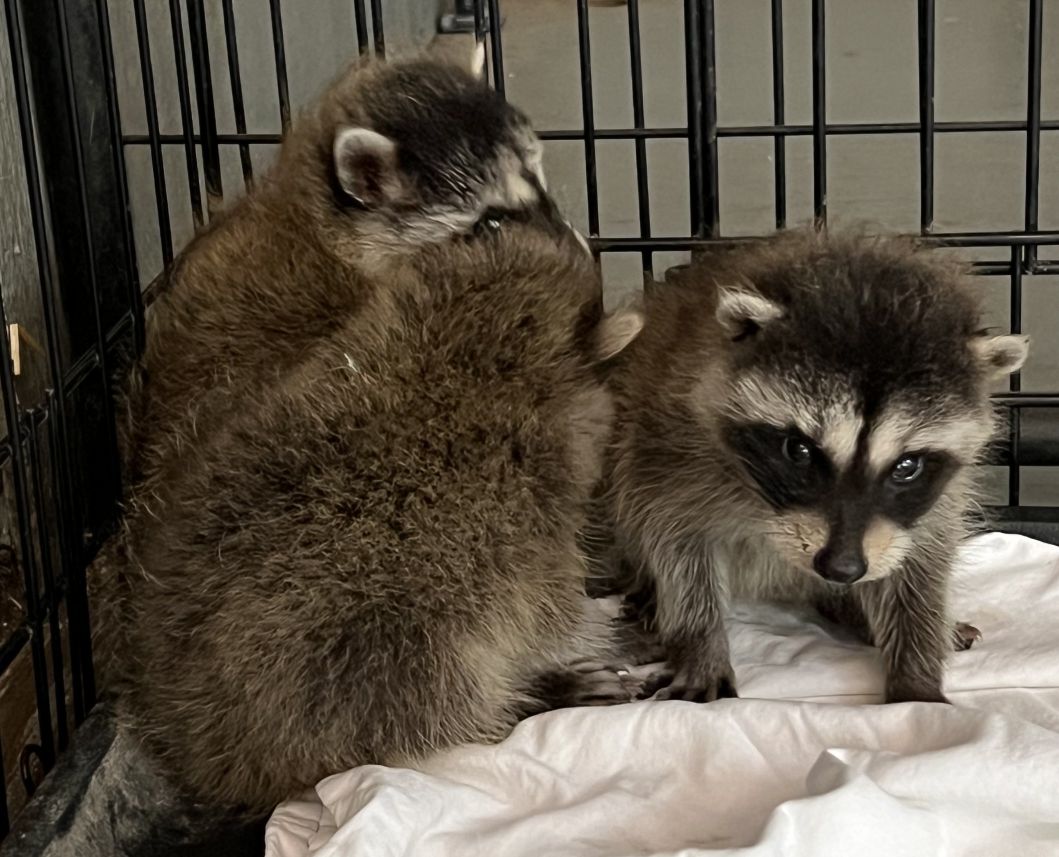If you’ve been following us lately, you’ve likely heard the chatter about this spring’s adorable new arrivals: three baby raccoons brought to Cat Tales Wildlife Center for rehabilitation.
But what you might not see is the world behind the scenes—the quiet, round-the-clock work our team does to give animals like these little masked bandits the best possible second chance at life.
We wanted to take you on a quick behind-the-scenes tour of our wildlife rehab efforts—because these small victories are only possible thanks to your support.
How Animals Arrive
Most of the wild animals who come to Cat Tales for rehabilitation arrive here through no fault of their own:
– orphaned due to a parent hit by a car
– displaced by habitat destruction
– injured or sick from environmental hazards or human interference
– well-meaning but misinformed people trying to raise wild babies at home
This year’s raccoon kits (the official name for baby raccoons) were found after their mother was likely scared off during nearby tree removal. With no way to survive on their own, they were brought to us for care.
The Goal: Release Back to the Wild
Whenever we take in wild native species—like raccoons, foxes, coyotes, or bobcats—our goal is the same: get them healthy, strong, and wild enough to return home.
That’s why we limit human contact as much as possible, even when the babies are small and require bottle feeding. The less they imprint on people, the better their chances in the wild.
For these young raccoons, that means:
🍼 frequent bottle feedings to start, using special wildlife formulas
🌡️ temperature-controlled enclosures for warmth and comfort
🛠️ gradual introduction to climbing, foraging, and natural behaviors
⛺ transition to large outdoor enclosures for physical conditioning and “wilding up”
And when they’re ready, they’ll be released in appropriate, protected habitat where they can thrive.
The Work You Don’t Always See
Our rehab team and veterinary partners monitor everything from weight gain to behavior to subtle signs of readiness for release. And all of this happens while the rest of our team is also caring for the resident animals you see on exhibit.
In the early days, the baby raccoons required feedings around the clock, including overnight—our keepers and trained students often take shifts to make this possible.
Now, they’re in the mischief stage—climbing, exploring, and getting into everything they can reach (as any raccoon enthusiast will tell you, this is completely normal!). Watching that transformation is one of the most rewarding parts of the work.
Why We Need You
Wildlife rehabilitation takes time, specialized knowledge, and resources.
Your support helps provide:
🍼 formula, medications, and supplements
🏡 safe, species-appropriate enclosures
🛠️ maintenance of outdoor rehab habitats
👩⚕️ veterinary care and monitoring
🕐 staff and student time for intensive, hands-on care
Rehab isn’t glamorous—and it often happens out of sight. But thanks to supporters like you, we’re able to offer second chances to animals that would otherwise have no hope.
So when you see those sweet baby raccoon faces, know that you are part of their journey back to the wild.
🐾 – The Cat Tales Wildlife Center Team

